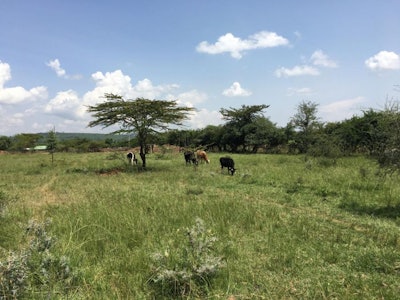
Napier grass, used in animal feed in Africa, could boost milk production while reducing carbon emissions
How do you feed a growing population while curbing climate change? Using wild and native grasses such as Napier grass in animal feed may be part of the solution.
While attempting to estimate the potential climate impacts of agricultural expansion in East Africa, a team of researchers from Wageningen and Lancaster universities determined that the use of native Napier grass in animal feed could actually decrease greenhouse gas emissions in the region. The native grass also increased milk yields by 44-51%, roughly the same amount as when local cattle were fed traditional Western diets including corn silage. The traditional diets, however, stood to increase greenhouse gas emissions from African dairies, which still lack the efficiencies of industrialized agriculture.
According to Mariana Rufino, a professor of agricultural systems at Lancaster University and one of the co-authors on the study, Napier grass is rich in protein and well adapted to growing in warm climates. It’s a perennial species that doesn’t require plowing or replanting, and it doesn’t require as much fertilizer or water as conventional crops such as hay or silage, she said.
The grass is already grown for use in animal feed in Brazil and East Africa. Large-scale production isn’t the norm, “but it might happen in the future,” Rufino said.
When managed properly, she said, Napier grass produces a large amount of high-protein biomass. It’s fed fresh, and could lend itself to the production of grass-fed cattle for consumers looking for products that are better for animals and for the planet.
“I suspect that every year there will be more support for consumers for low-carbon foods,” Rufino said. And as that support builds, she said, she anticipates that scientists will “look backward” for solutions forgotten to agriculture.
Scientists know very little about the potential use of African grasses, Rufino said. She suspects that most regions have 2-3 wild grasses that could be cultivated for various uses in agriculture. Biodiversity, she said, may not be the end goal, but actually the means of achieving sustainability.
“As we try to reduce the carbon footprint, we will have to go back a little bit and look at the feed resources that are a bit underused,” she said. “Among those we will have to go back to the wild grasses and see which ones are nutritious for the cows, and that at the same time have low carbon emissions. … I think science has to go back to look into making better use of biodiversity.”

















